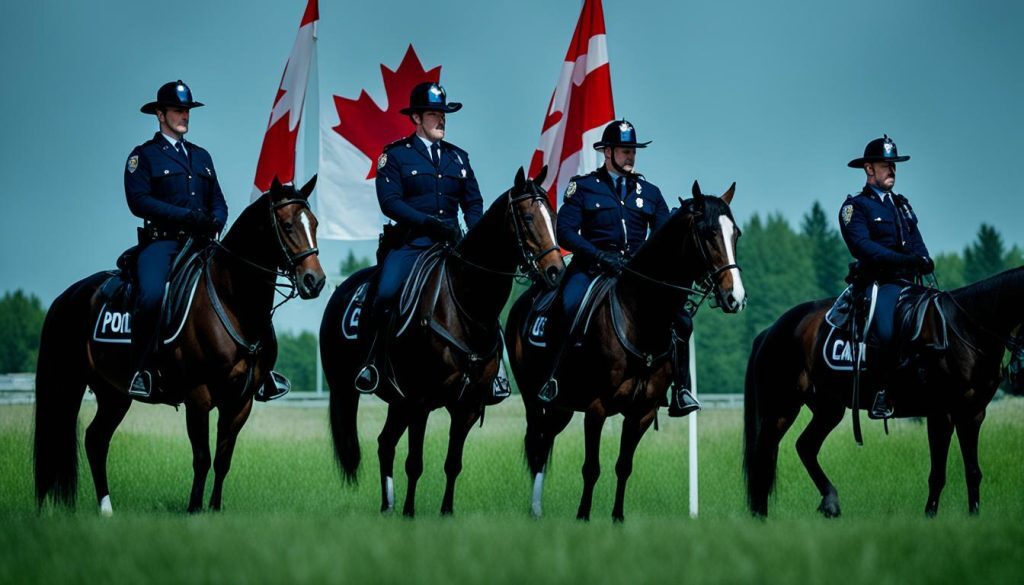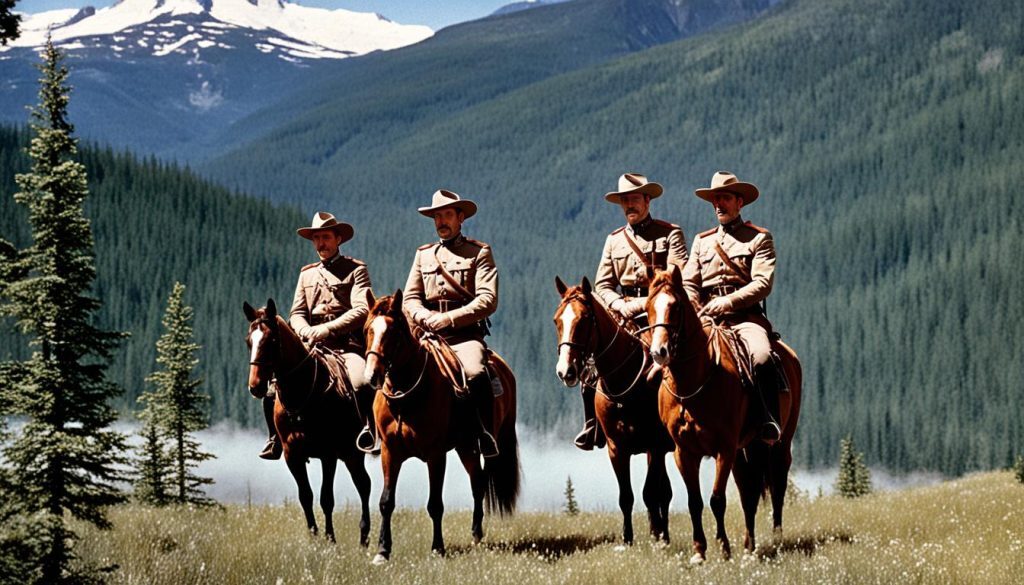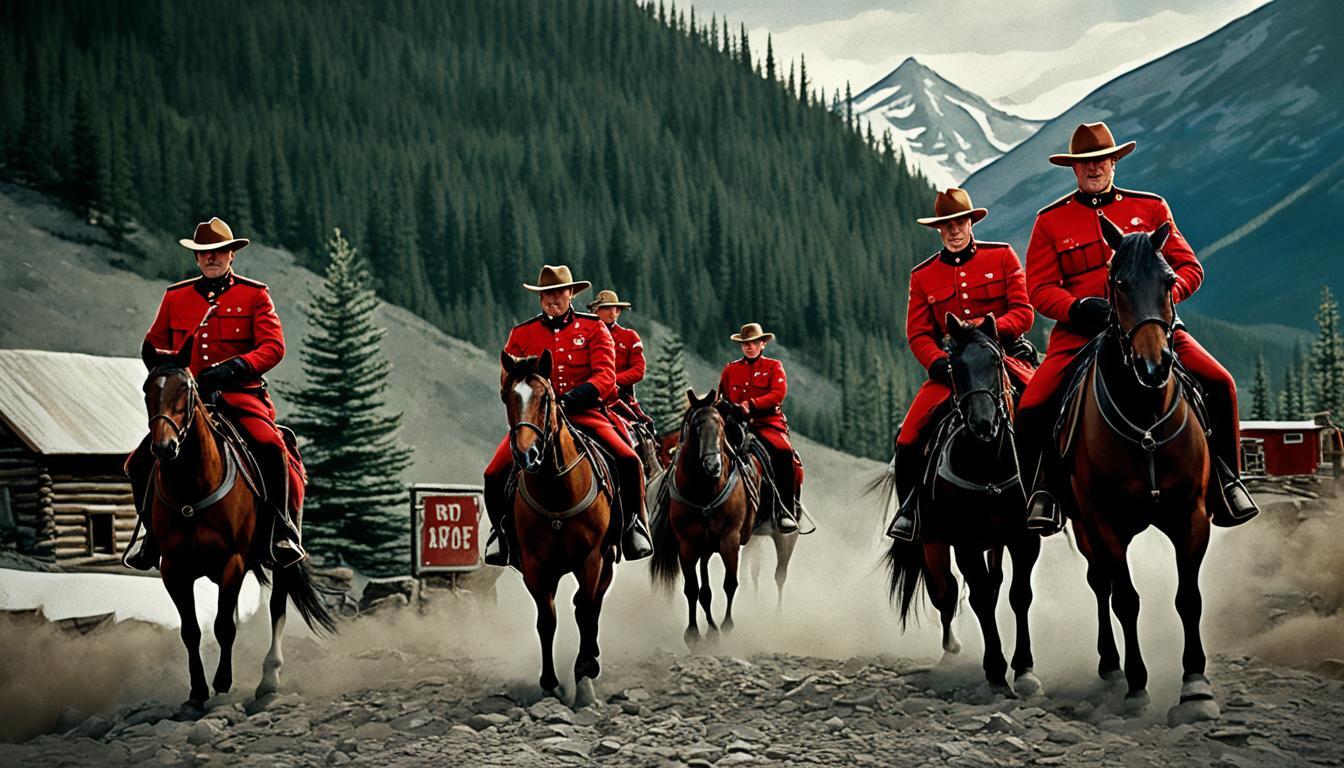RCMP Creation Explained: An Insight into Its Origins
Did you know that the Royal Canadian Mounted Police (RCMP) has been serving Canada for almost 150 years? Established in 1873, this iconic police force has a rich historical background that dates back to its origins as the Northwest Mounted Police (NWMP). Let’s explore the fascinating journey of the RCMP and discover why it was created in the first place.
Key Takeaways:
- The RCMP was originally known as the Northwest Mounted Police (NWMP) and was created in 1873.
- Its primary mandate was to maintain law and order in the western territories of Canada.
- The RCMP’s uniform has evolved over time, symbolizing adaptability and functionality.
- The RCMP played a significant role in the colonization of Canada and its relationship with Indigenous communities is complex.
- The RCMP’s reconciliation efforts include initiatives to rebuild trust and address systemic injustices.
The Significance of RCMP Formation
The creation of the RCMP holds immense significance in Canadian history. Established with the purpose of maintaining law and order in the western territories, the RCMP was originally known as the Northwest Mounted Police (NWMP) when it was founded in 1873. The decision to establish the NWMP, which later became the RCMP, was driven by the need to protect European settlers from perceived threats posed by Indigenous communities.
At the time of its formation, the RCMP played a central role in the colonization of Canada, acting as a symbol of authority and power in the western frontier. The presence of the NWMP brought a sense of security and stability to the region, allowing settlers to establish communities and pursue economic activities with confidence.
However, it is essential to acknowledge that the formation of the RCMP also marked the beginning of a complex and often troubled relationship between the police force and Indigenous communities. The historical legacy of the RCMP includes the subjugation and mistreatment of Indigenous peoples, reflecting the systemic injustices that were prevalent during that period.
Today, as Canada strives to reconcile with its colonial past and build a more inclusive and equitable society, the significance of the RCMP’s establishment lies not only in its historical context but also in the need to address past wrongs. The RCMP has a responsibility to engage in meaningful reconciliation efforts and work towards fostering trust, understanding, and collaboration with Indigenous communities.

RCMP’s Role in Canadian Law Enforcement History
The RCMP, originally known as the Northwest Mounted Police (NWMP), has played a significant role in shaping the history of Canadian law enforcement. Since its inception, the mounties have been at the forefront of maintaining law and order, protecting communities, and upholding the values of justice and security.
Established in 1873 as the NWMP, the RCMP’s jurisdiction quickly expanded, making it the primary police force for approximately 7.5 million people, which accounts for 22% of the Canadian population. Covering around 75% of the country’s landmass, the RCMP has been entrusted with the responsibility of ensuring the safety and well-being of countless individuals and communities throughout Canada.
The mounties have been engaged in various law enforcement activities, including crime prevention, investigations, and community policing initiatives. Their presence is integral to upholding the law and providing a visible and accessible police force to those in need. Whether it’s patrolling remote areas, responding to emergencies, or collaborating with community organizations, the RCMP’s dedication to serving the people of Canada remains unwavering.
The RCMP is not just a police force; it symbolizes the commitment of the Canadian government to protect its citizens and maintain the integrity of the justice system. The mounties are respected for their professionalism, courage, and unwavering commitment to upholding the law. Through their efforts, the RCMP has earned a reputation as one of Canada’s most esteemed law enforcement agencies.

As the RCMP continues to evolve and adapt to the changing needs of Canadian society, its role in law enforcement history remains crucial. The mounties exemplify the dedication and perseverance required to maintain peace and security, ensuring that Canada remains a safe and flourishing nation.
Historical Reconciliation Efforts by the RCMP
Over the years, the RCMP has recognized and acknowledged the historical impact of its actions on Indigenous peoples, including overtly racist or systemically racist behaviors. In response, the police force has taken significant steps towards reconciliation, aiming to rebuild trust and strengthen relationships with Indigenous communities.
One of the key aspects of these reconciliation efforts is meaningful engagement, consultation, and collaboration with First Nations, Inuit, and Métis peoples at the local, regional, and national levels. The RCMP understands the importance of actively involving Indigenous communities in the decision-making process, fostering a sense of shared responsibility and partnership.
In addition to engagement, the RCMP has implemented changes in policies, programs, and training to address the recommendations put forth by the Truth and Reconciliation Commission and the Missing and Murdered Indigenous Women and Girls Inquiry. These measures aim to rectify past injustices and improve the quality of policing services for Indigenous peoples.
Through these reconciliation initiatives, the RCMP is committed to rebuilding trust, acknowledging past wrongs, and working towards a more inclusive and equitable future. By actively engaging with Indigenous peoples, the RCMP strives to foster understanding, respect, and a shared vision of justice and safety for all.
Evolution of the RCMP Uniform
The RCMP uniform has undergone significant changes over the past 150 years, adapting to the evolving roles and responsibilities of the police force. Starting with the original Northwest Mounted Police (NWMP) uniform, which included a white helmet, buffalo coat, mittens, and wool stockings, the uniform has transformed into the iconic ensemble we recognize today.
The transition from the NWMP uniform to the current RCMP uniform introduced several notable elements. The red serge jacket, representing courage and strength, became an internationally recognized symbol of the RCMP. Paired with the Stetson hat, blue trousers, and high-brown boots, the uniform exudes professionalism and authority.
While the red serge jacket and Stetson hat are reserved for formal occasions, the day-to-day working uniform focuses on practicality and functionality. It consists of a grey shirt, dark blue cargo pants, and black boots, allowing officers to perform their duties effectively while maintaining a professional appearance.
The evolution of the RCMP uniform mirrors the changes in law enforcement practices and the demands of modern policing. It showcases the adaptability and commitment of the RCMP to meet the needs of Canadian society.
Symbolism of the RCMP Uniform
The RCMP uniform holds deep symbolism, with each element representing national pride, historical roots, and a commitment to service. The most iconic component of the uniform is the red serge jacket, which stands as a symbol of courage, integrity, and steadfastness. The vibrant scarlet red color, inspired by the red coats worn by the British military, commands attention and exemplifies the bravery and strength inherent in the RCMP.
Accompanying the red serge jacket are gold buttons and royally inspired emblems, further adding to the regal and grand presence of the uniform. These intricate details pay homage to the historical ties between the RCMP and Canada’s rich heritage. They serve as a reminder of the police force’s deep roots and long-standing commitment to maintaining law and order.
For over a century, the red serge jacket, along with the Stetson hat and high-brown boots, has become an internationally recognizable symbol of the RCMP and Canada. It evokes a sense of national pride and respect, both within the country and abroad. The uniform’s timeless design and distinctive features are a testament to the RCMP’s enduring legacy and its role in upholding the values cherished by Canadians.
| Symbolic Element | Meaning |
|---|---|
| Red Serge Jacket | Symbolizes courage, integrity, and steadfast service |
| Gold Buttons | Represents the regal and grand nature of the RCMP |
| Royally Inspired Emblems | Pay homage to historical roots and Canada’s heritage |
| Stetson Hat | Symbolizes tradition, professionalism, and authority |
| High-Brown Boots | Reflects the hardworking nature of the RCMP |
Reconciliation and the RCMP Uniform
The RCMP is dedicated to reconciliation, and this commitment extends to their uniform. While the iconic red serge jacket and Stetson hat are reserved for formal events, the day-to-day working uniform is designed to be practical and reflective of the demands of modern policing.
The RCMP recognizes the need to adapt and evolve, and as part of this ongoing process, they continuously update the duty uniform. Field testing is currently underway for a new navy-blue shirt, aimed at providing enhanced comfort, professionalism, and high performance for RCMP officers.
The modernization of the uniform is a significant aspect of the RCMP’s commitment to reconciliation and meeting the needs of diverse communities. By ensuring that the uniform is functional, comfortable, and adaptable, the RCMP is taking meaningful steps in fostering an inclusive and respectful relationship with all Canadians.
| Benefits of the New RCMP Uniform | Impact on Reconciliation |
|---|---|
| Enhanced comfort for officers during duty hours | Indicates the RCMP’s willingness to adapt and change |
| Professional appearance that inspires confidence | Demonstrates the RCMP’s commitment to professionalism and accountability |
| Improved performance in demanding situations | Enables officers to provide efficient and effective policing services |
Looking Ahead: Continuing the RCMP’s Reconciliation Journey
The reconciliation journey of the RCMP is an ongoing process that is built on continuous engagement, consultation, and collaboration with Indigenous communities and organizations. We are committed to implementing the recommendations put forward by various surveys and task forces, with the goal of addressing issues related to policing on reserves and improving the quality of policing services for Indigenous peoples. As we look towards the future, our focus is on advancing reconciliation within the ranks of the RCMP.
One of our key initiatives is the introduction of educational programs that promote a deeper understanding of Indigenous culture, history, and perspectives. By fostering cultural awareness and sensitivity among our members, we aim to create a more inclusive and respectful environment within the RCMP. Furthermore, we are actively working towards involving Indigenous peoples at all levels of the police force, ensuring that their voices are heard and represented in decision-making processes and policy development.
Another significant aspect of our reconciliation journey is ensuring sustainable aftercare services for Indigenous offenders. We recognize the importance of providing culturally appropriate support to facilitate the rehabilitation and reintegration of native offenders back into their communities. By doing so, we aim to contribute to a justice system that is fair, equitable, and responsive to the needs of Indigenous peoples.
As we move forward, the RCMP is committed to advancing reconciliation, taking meaningful actions, and making continued progress towards a more inclusive, respectful, and equitable police force. Our dedication to these goals is unwavering, and we look forward to a future where the RCMP continues to play a pivotal role in building trust, understanding, and positive relationships with Indigenous communities across Canada.
- The Role of Police in Community Safety & Unity - October 6, 2025
- Quebec Police Officer Salary Insights 2023 - July 13, 2025
- Canada Arrest Protocol: What Police Say Upon Arrest - June 12, 2025




















Post Comment